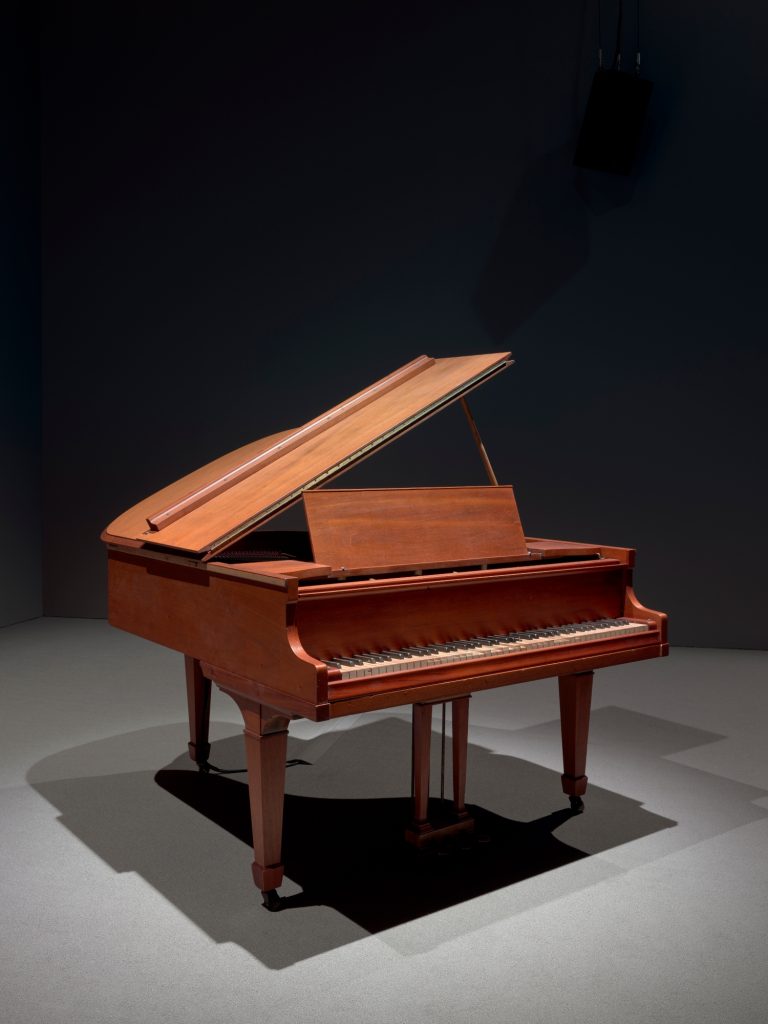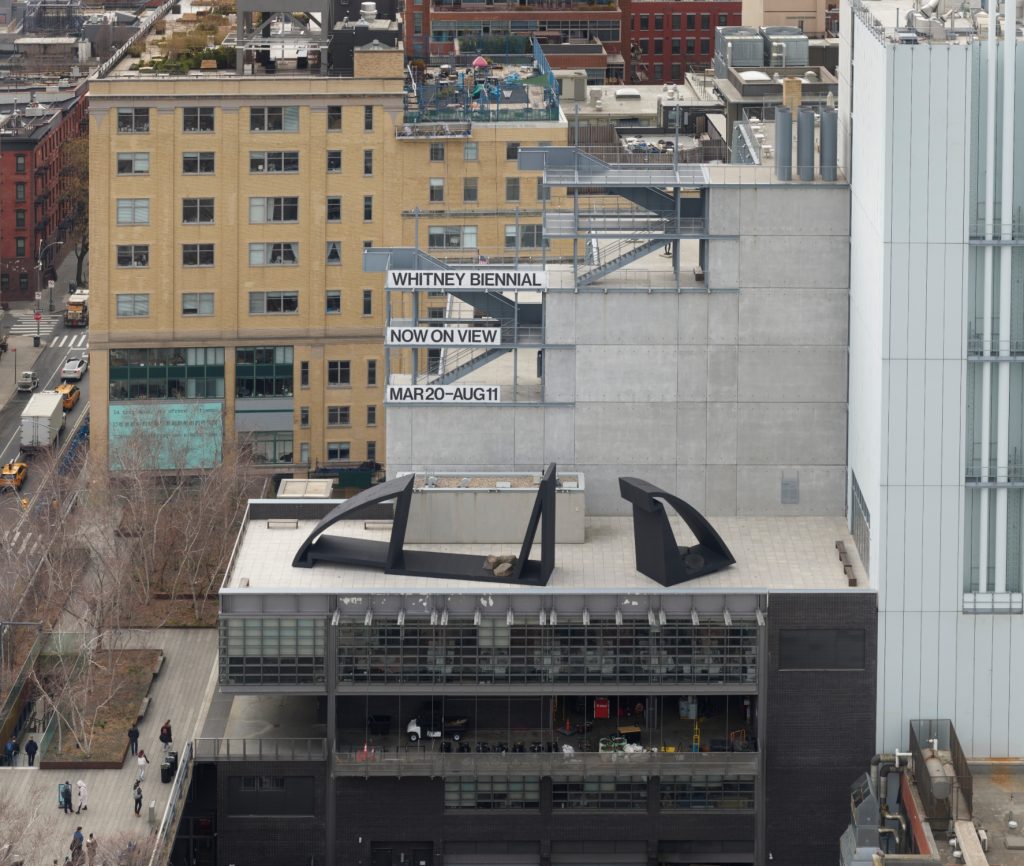At this year’s Whitney Biennial — the recurring, high-profile exhibition of the Whitney Museum of American Art in New York City — I watched a piano play itself.
If I saw that concept on paper without either experiencing the work firsthand or at least learning more about it, I might get worried that I was wading into something more kitschy-chic than interesting. I just don’t like things that look primed for Instagram, as useful as the platform is, particularly in creative communities. But rejoice! This wasn’t that.
As out there of a concept as it was, the artwork — “TEMPO RUBATO (STOLEN TIME)” (2023-2024), by the always memorable Nikita Gale — was quietly enrapturing.
The Nature of the Artwork
It took up a whole gallery space at the museum, as it included fluctuating LED light and an audio set-up that added to the sense the room was swallowed up. On the actual piano, the net result of Gale’s handiwork meant it appeared as though an invisible musician was performing — although, the traditional assortment of musical notes from the familiarly grand instrument was absent. Instead, the sound tracing to the center of the room, which sometimes got quite dark, was just that of the piano’s mechanics.
To step back a little, I have recently been fascinated by the possibilities of sculpture to essentially draw the space around itself into its world, and similar forces unfolded here. The gallery space, which had darkened walls, was swept up in the lights and sound, putting a performance out front. But there was no performer, and there was no real sense that beholding the thing made you into an audience — unlike, perhaps, the work of Edgar Degas, which incorporated the sights of performance and placed you, even if two-dimensionally, squarely in an audience’s vantage point.
That back-and-forth between stage and viewer creates a relationship, a call-and-response. It’s probably unheard of for a live performance to be accompanied by a perfectly silent crowd. There’s something there.
Communication at the Forefront
But here, Gale went elsewhere.
It reflects an essential truth of art, whether visual, written, or some form I’m forgetting. It’s a necessary avenue of communication — and we communicate by simply existing in our environs. I see it in the overwhelming majority of what I check out, in terms of art exhibitions.
Even if you move into the realm of work purely designed to amplify a space, whether historical art meant for a church or modern work meant for a hotel or similarly utilized area, the underlying principles of design still tend to communicate something. It’s only when there’s a sense of disconnect — a genuine haphazardness — that the pathway crumbles.
But in general, we’re constantly sending something outwards, communication-wise. Spectacle is nice, whether a stage that an audience meets with thunderous applause or the squarely modern invention of a social media post accumulating interactions. But it’s an addendum to what defines the original thing. In general, we do not live to grow our social media followings or receive positive reviews as an artist: purely being talked at, in some context.
You see, I think, the damaging results when someone tries to move the arch of their life into whatever a social media algorithm or the crowd dictates. It doesn’t work. Trends fade, or your confabulation of them in your public persona becomes so nonsensical that it all starts to disassemble.
The thing that keeps us going — that lies behind the dubiously described “content” we release — is elsewhere.
An Enriching Force, Brought Forward
And here, the performativity of however you’d describe that force is at the forefront, freed from its trappings. We create because we must. It’s a cosmic, reaching force.
The informational card from the museum that accompanied this particular artwork also referenced the physical side of all this, exploring the reach of mechanics — which in our physical, lived presence carries that same stream of communication gushing from internal geysers.
In the HBO television series “Westworld,” the opportunity for the mechanized stand-ins for living, breathing people to gain sentience was spurred by giving them the ability for more precise physical expressions, if I recall it accurately. And as any actor will tell you, the most otherwise unnoticeable of a physical movement actually does carry that import. When is a human being ever wholly still?
So, what I was contemplating when checking out Gale’s “TEMPO RUBATO (STOLEN TIME)” was performance as an essential, existential force that connects to us but lifts beyond speech or familiar patterns of musical notes, whatever the source. (Far-reaching, I know.)
Interviews
I have interviewed many, many musical artists over recent years, and while plenty did discuss wanting to connect with an audience — sometimes specifically in a live setting (meaning a concert), I’d wager that an equal or larger portion expressed little to no real insistence on a specific reaction at all.
They majorly appreciated their listeners, but at the same time, audiences were an afterthought. And to be sure, I generally wasn’t interviewing massive pop singers or members of pop teams. But these attitudes were very consistent. These were everyday people from across walks of life — and places in the world — who were creating for themselves if “for” anyone at all. Their creativity was not a concoction.
Gale’s fascinating artwork isolated intangible qualities of these experiences, making it all — if you did imagine it with more specific form — like wisps of smoke, offering a tantalizing, human journey.
The biennial’s marketed end date was August 11, but some of the art remains on view. And nicely, that selection includes this artwork as well. The end date for the rest of the art is September 29.

Featured image: Installation view of Whitney Biennial 2024: Even Better Than the Real Thing (Whitney Museum of American Art, New York, March 20- August 11, 2024). Torkwase Dyson, Liquid Shadows, Solid Dreams (A Monastic Playground), 2024. Photograph by Ron Amstutz
You may also like
-
Diana Kurz at Lincoln Glenn in New York: A Review of a Shining Art Exhibition
-
Dustin Hodges at 15 Orient in New York City: An Ensnaring Exhibition at an Exciting Gallery
-
Maren Hassinger at Susan Inglett Gallery in New York: Reviewing an Uplifting Art Exhibition
-
Enzo Shalom at Bortolami in New York City: Reviewing an Entrancing Exhibition of Paintings
-
“Ben Werther: Townworld” at Amanita in New York City: Reviewing a Richly Memorable Art Exhibition
